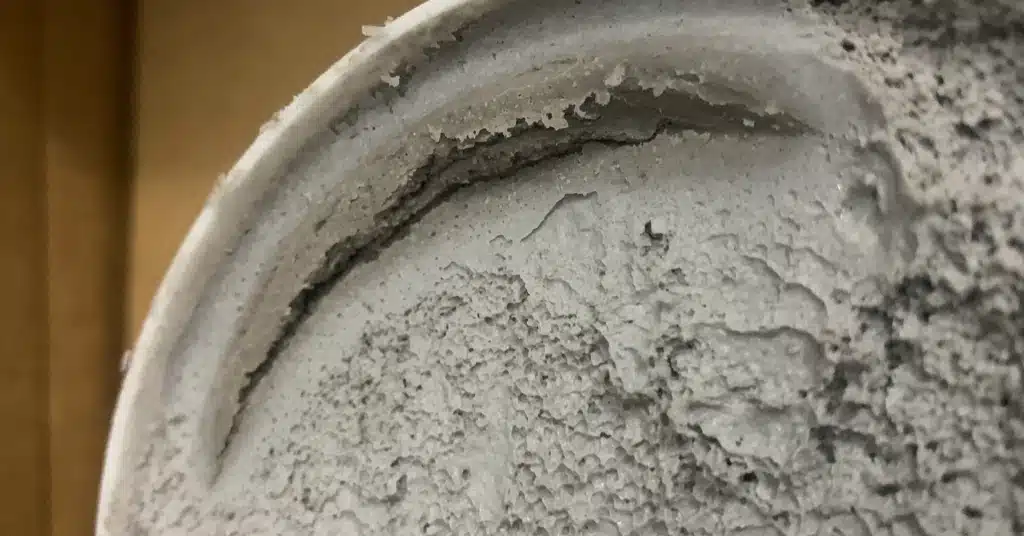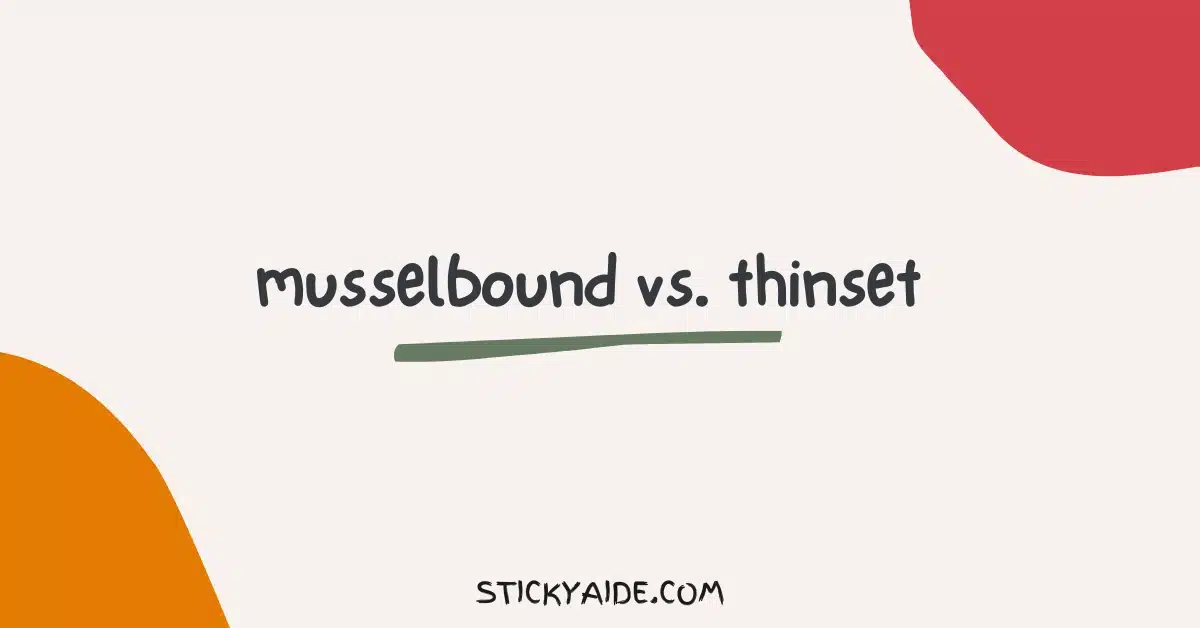You will find two basic options for tile installation. You can use traditional thinset mortar or MusselBound adhesive tile mat for tile installation.
MusselBound is a peel-and-stick tile mat which helps you to place the mat directly to the surfaces. On the other hand, traditional thinset mortar is a stronger and durable option for installing tile to the surfaces.
Here, I try to ease your confusion between MusselBound Vs. Thinset by comparing their features.
Read More: Masonry Cement Vs. Portland Cement
Read More: MusselBound Vs. Mortar
MusselBound Vs. Thinset
Overview of MusselBound
MusselBound is an adhesive mat for tile installation that eliminates the mess of traditional mortar. It’s a peel-and-stick mat that replaces the need for additional adhesives or mortars.
All you need to do is adhere the adhesive mat to your wall and place it accordingly. Once you’re done, finish off the job with grout. The whole process is incredibly simple, and you can say goodbye to messy traditional mortars.
MusselBound adhesive sheets are industrial strength, ensuring your tiles stay in place for years. The adhesive mat eliminates the need for additional adhesive, reducing the likelihood of errors in the installation process.
Additionally, you can rest easy knowing that the adhesive mat is waterproof, making it perfect for wet areas like bathrooms and showers.
So, if you want to enjoy an easy, mess-free tile installation process, MusselBound is definitely worth considering.

Advantages of MusselBound
- It reduces the mess associated with thinset mixing and spreading.
- It saves time because you can just peel and stick the mat.
- It is suitable for small or simple tile projects, such as backsplashes.
Overview of Thinset Mortar
Thinset is a specialized type of mortar that is used to adhere tiles to walls. It is made of cement, sand, and water retention agents and is available in pre-mixed buckets or as a dry mix so that users can add water.
Thinset is thinner than most mortars, making it easier to spread while maintaining uniformity without oozing through grout lines.
There are two types of thinset: unmodified and modified. A modified thinset may contain acrylic or liquid latex polymers to create stronger bonds, as well as chemical-resistant agents.
Unlike grout or traditional mortars, thinset should never be visible at the end of the project and should be hidden behind the tile.
It is recommended to use either sanded or unsanded grout, depending on the space between the tiles. Thinset is a crucial component of tile installation, and the type selected should depend on the project’s needs.

Advantages of Thinset Mortar
- It is stronger and more durable than MusselBound.
- It prevents tiles from cracking or shifting over time.
- It is suitable for larger, more complex tile projects like shower surrounds.
- Both interior and exterior uses are possible.
Read More: MusselBound Adhesive Tile Mat Reviews
Which One Should You Use? MusselBound Or Thinset?
If you want to determine which one you should use between MusselBound and thinset mortar. Then you have to determine in which project you are going to use them. Because both of them work well in their own way.
In terms of price, thinset mortar is less expensive than MusselBound. Traditional mortar is used between tile and surfaces, while MusselBound itself is an adhesive tile mat that comes with adhesive in it.
As a traditional mortar, thinset costs less than MusselBound adhesive tile mat. But the MusselBound adhesive tile mat was worth the extra cost, as it facilitates the tiling process and makes it easier for beginners.
If you are working on a project that is simple and small, then MusselBound is an excellent choice. As it eliminates the need for mixing and spreading thinset, which require expertise.
However, if you are working on a large and complex project, then thinset mortar is the best option. As it is versatile and strongly holds tiles in place.
Is Thinset Same as Mortar?
Thinset is thinner and specifically designed to hold tiles in place, and sometimes it contains latex or acrylic additives to enhance its bonding abilities. Despite thinset being a type of mortar, not all mortars are thinset.
Is MusselBound Adhesive Waterproof?
Last Opinion
If you are installing tiles in your home, then you may have heard about MusselBound and thinset mortar. They are the two popular options for sticking tiles to the surfaces.
MusselBound eliminates the need for mixing and spreading thinset. It is just a peel-and-stick tile mat which can be placed into the surface directly.
Traditional thinset mortar is a specifically designed adhesive to use between tile and surface to adhere them strongly.
Here, I compared MusselBound Vs. Thinset to help you find the absolute solution for your next tiling project.

